#camerasetting
Text
Mastering Photography in Different Weather Conditions: Tips for Capturing Stunning Images No Matter the Forecast
IntroductionWeather plays a crucial role in outdoor photography, often presenting both challenges and opportunities. From the soft, diffused light of an overcast day to the dramatic skies of a storm, each weather condition offers unique elements that can enhance your photos. In this article, we will explore how to adapt your photography techniques to various weather conditions, allowing you to…
#Beach#CameraSettings#camra#countryside#FogandMistPhotography#LandscapePhotography#lanscape#Mastering Photography in Different Weather Conditions#Online Education#OutdoorPhotography#OvercastDayPhotography#photographer#Photography#PhotographyTechniques#PhotographyTips#Rain#RainyWeatherPhotography#Seascape#SnowPhotography#storm#SunnyDayPhotography#Techniques#Tips for Capturing Stunning Images No Matter the Forecast#travel#Weather#weather conditions#WeatherPhotography#wind#WindyConditions
0 notes
Text
Unveiling the Invisible: Infrared Photography Guide
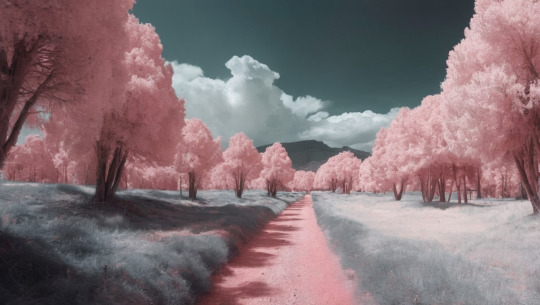
Infrared Reimaginings: Seeing the Unseen in Landscapes, Portraits, and Everyday Objects

Infrared photography of Landscape.
Imagine a world where foliage bursts into ethereal white, skies bleed into vibrant pinks and purples, and ordinary objects take on an otherworldly glow. This isn't a science fiction film; it's the captivating realm of infrared photography, a technique that transcends the visible spectrum, revealing a hidden language of light unseen by the human eye.
For photographers seeking to push boundaries and explore the unseen, infrared photography offers a unique and powerful tool. It's not just about capturing different colors; it's about transforming familiar scenes into something entirely new, inviting viewers to see the world through a fresh lens.
Beyond the Visible: Unveiling the Infrared Spectrum
The human eye perceives a limited range of light, known as the visible spectrum. But beyond the red end of this spectrum lies a vast expanse of invisible light, including infrared radiation. Infrared photography captures this invisible light, translating it into visible colors through filters, specialized cameras, or post-processing techniques.

The results are often mesmerizing. Lush green landscapes bathed in white light take on an ethereal quality, while vibrant skies transform into a kaleidoscope of pinks, purples, and oranges. Skin tones become smooth and almost porcelain-like, and everyday objects like leaves, flowers, and even buildings reveal hidden textures and details invisible to the naked eye.
A Photographer's Playground: Exploring the Creative Possibilities
Infrared photography isn't just about capturing fantastical colors; it's about harnessing its unique properties to create evocative images. The high contrast between light and dark areas creates a dramatic effect, while the ability to capture details invisible to the eye adds depth and mystery to the scene.
Landscapes Transformed:
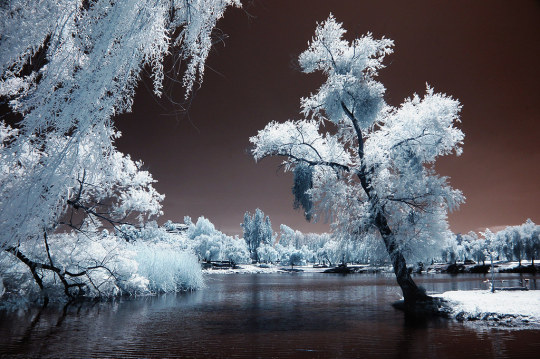
Landscapes with Infrared Photography
Imagine a forest where leaves shimmer like snowdrifts, contrasting against the deep blue sky. Or a coastline where crashing waves appear frozen in time, their white foam cascading against the dark, dramatic rocks. Infrared landscapes transport you to a world of forgotten dreams, where the familiar becomes fantastical.
Portraits Unmasked:
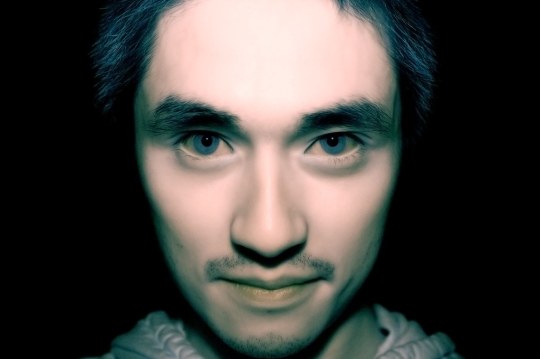
Portrait With Infrared Technique
Infrared light penetrates deeper into the skin, revealing a smooth, almost flawless texture. This can be used to create ethereal portraits with timeless beauty or to emphasize the subject's vulnerability and raw emotion. By playing with different filters and processing techniques, you can achieve various effects, from the dreamy to the dramatic.
Everyday Objects Reimagined:

The mundane becomes extraordinary under the infrared gaze. A simple leaf becomes a network of intricate veins, a rusty nail a sculptural masterpiece. By focusing on the textures and details often overlooked, you invite viewers to appreciate the hidden beauty in the ordinary.
Technical Considerations: Embracing the Challenge
While the creative possibilities are endless, infrared photography requires a different approach compared to traditional photography. Understanding the technical aspects is crucial for achieving the desired results.
Filters play a key role, blocking visible light and allowing only infrared wavelengths to reach the camera sensor. Different filters produce different effects, so experimentation is key. Additionally, long exposures are often necessary due to the lower sensitivity of cameras to infrared light, requiring the use of a tripod for sharp images.
Finally, post-processing plays a vital role in manipulating the captured infrared data and translating it into visually compelling images. Photoshop allows you to adjust colors, contrast, and other settings to achieve the desired effect.
What are the best cameras for infrared photography?
Determining the "best" camera for infrared photography depends on various factors, including your budget, experience level, and desired outcomes. However, some top contenders across different categories consistently impress users:
Best Full-Frame Mirrorless Cameras:
- Sony a7R IV/Sony a7 IV: Boasting high-resolution full-frame sensors, excellent low-light performance, and extensive customization options, these cameras excel at capturing detailed infrared images. They cater to both beginners and experienced photographers.
- Fujifilm GFX 50S II: This medium format powerhouse features a massive sensor for stunningly detailed images with incredible dynamic range. Weather-sealed and built for harsh conditions, it's perfect for outdoor enthusiasts.
- Canon EOS R6 Mark II: This full-frame marvel offers exceptional image quality, fast autofocus, and a plethora of features, making it versatile for infrared endeavors.
- Nikon Z9: This high-end offering boasts a stacked full-frame sensor for incredibly fast burst speeds and blackout-free viewing. Ideal for professionals, it delivers top-notch image quality and advanced features.
Best Point-and-Shoot Cameras:
- Sony RX100 VII: This compact powerhouse packs a punch with its 1-inch sensor and versatile zoom lens, making it great for travel photography. It's user-friendly and portable.
- Canon PowerShot G7 X Mark III: Offering a good balance of image quality, features, and portability, this point-and-shoot is budget-friendly for beginners.
- Ricoh GR IIIx: This APS-C sensor gem delivers excellent image quality in a compact body, weather-sealed for outdoor adventures.
Budget-Friendly Options:
- Olympus OM-D E-M10 Mark IV: This micro four-thirds camera offers good value for its image quality and features. Compact and portable, it's well-suited for travel photography.
- Canon EOS M50 Mark II: Ideal for beginners, this entry-level mirrorless camera provides good image quality at an affordable price and is user-friendly.
- Sony a6100: This APS-C sensor camera strikes a good balance between image quality, features, and affordability. Relatively compact and portable, it's great for travel photography.
Converted Cameras:
- Full-frame DSLRs: Many older full-frame DSLRs can be converted to infrared with impressive results, offering excellent image quality and low-light performance at a reasonable price.
- Point-and-shoot cameras: Some point-and-shoot cameras can also be converted, providing a budget-friendly option for beginners to experiment with infrared photography.
How to take infrared photos with your camera

infrared filter for Cameras
In that case, you should know about infrared filters that allow only infrared light to get into your camera sensor. These filters typically come in two main types:
1. Blocking Filters:
- These filters completely block visible light and only allow infrared wavelengths to pass through.
- Common types include IR720, IR850, and IR950, with numbers indicating the approximate cutoff wavelength for visible light.
- They are ideal for capturing pure infrared images with strong effects and minimal color bleed.
- However, due to blocking all visible light, they require longer shutter speeds and careful exposure metering.
2. Hot Spot Reduction Filters:
- These filters allow some visible light to pass through alongside infrared wavelengths.
- They help reduce the "hot spot" phenomenon, a bright central area that can occur in converted cameras due to sensor sensitivity variations.
- Popular options include the Hoya R72 and Heliopan R72, offering a balance between IR transmission and hot spot reduction.
- They offer faster shutter speeds compared to blocking filters but may have slightly less pronounced infrared effects.
Additional factors to consider:
- Camera compatibility: Make sure the filter size matches your camera lens thread diameter.
- Filter material: Glass filters offer better image quality but are heavier and more expensive. Plastic filters are lighter and cheaper but might show slight color casts.
- Focus issues: Some converted cameras may struggle to autofocus with an infrared filter, requiring manual focusing.
Alternatives to dedicated filters:
- Gel filters: Colored gel filters, particularly red or black, can block visible light to varying degrees. However, they are less precise and may introduce unwanted color casts.
- Software conversion: While not ideal for pure infrared, post-processing software can sometimes be used to convert regular photos to an infrared-like look.
Ultimately, the best-infrared filter for you depends on your specific camera, desired outcomes, and budget. Researching various options and considering your photography goals will help you make an informed choice.
Beyond the Technique: A Journey of Artistic Expression
Infrared photography is more than just a technical exercise; it's a journey of artistic exploration. It invites you to slow down, observe the world around you with fresh eyes, and capture the unseen beauty that lies beneath the surface.
It's a chance to experiment, to break free from conventional norms, and to create images that challenge viewers' perceptions of reality. It's a gateway to a world of hidden wonders, waiting to be discovered and shared with the world through your lens.
So, are you ready to embark on this journey into the unseen? Pick up your camera, embrace the challenge, and start reimagining the world through the unique language of infrared photography. You might just be surprised by the beauty you find.
Read the full article
#beginnerphotography;#camerasettings#creativephotography;#filters;#infraredphotography;#landscapephotography;#longexposurephotography;#photographytutorial#portraitphotography#post-processing;
0 notes
Text
📸 Mastering Mobile Photography: 10 Tips for Picture-Perfect Shots 🌟
Introduction
In an era where smartphones have become an extension of ourselves, mobile photography has evolved into a powerful art form. With the right techniques, you can capture stunning moments that rival professional DSLR shots. In this blog, we'll unveil the top 🔟 mobile photography tips to help you elevate your skills and take captivating photos with your trusty device.
1️⃣ Clean Your Lens Regularly 🧼
Before you embark on your photographic journey, take a moment to clean your lens. Over time, our pockets and bags collect dust and smudges, affecting the clarity of your photos. A simple wipe with a microfiber cloth or a dedicated lens-cleaning tool can make a world of difference.
2️⃣ Master Your Device's Camera Settings 📷
Understanding your phone's camera settings is crucial for capturing the best shots. Experiment with various modes like Portrait, Panorama, and Pro mode (if available). Pro mode allows you to manually adjust settings like ISO, shutter speed, and white balance, giving you greater control over the final image.
3️⃣ Embrace Natural Light ☀️
Natural light is a mobile photographer's best friend. Whenever possible, use natural light to illuminate your subject. Soft, diffused light works wonders for portraits, while golden hour (the hour just after sunrise and before sunset) casts a warm, flattering glow on your subjects.
4️⃣ Focus and Exposure Lock 🔒
Most smartphones allow you to lock focus and exposure by tapping and holding the screen. This ensures that your subject remains sharp and properly exposed, even if you recompose the shot. It's a game-changer for creating professional-looking images.
5️⃣ Composition is Key 🖼️
Apply classic composition techniques like the rule of thirds, leading lines, and framing to enhance the visual appeal of your photos. Don't be afraid to experiment with angles and perspectives to create unique and engaging shots.
6️⃣ Utilize Third-Party Apps 📱
Take advantage of third-party apps to enhance your mobile photography experience. Apps like Adobe Lightroom, VSCO, and Snapseed offer powerful editing tools, allowing you to fine-tune your images and add creative effects.
7️⃣ Stabilize Your Shots 📚
Avoid shaky, blurry photos by stabilizing your phone. Invest in a tripod or use makeshift stabilizers like bean bags or even a stack of books. This simple step can drastically improve the sharpness and overall quality of your photos.
8️⃣ Experiment with Different Lenses 📸
If your phone supports additional lenses (such as wide-angle or macro), don't hesitate to try them out. Each lens offers a unique perspective, allowing you to capture a wider scene or focus on intricate details.
9️⃣ Tell a Story with Your Photos 📖
Great photos often tell a story or convey an emotion. Consider the narrative you want to convey and compose your shot accordingly. Whether it's a candid moment or a carefully arranged still life, every photo should evoke a feeling or memory.
🔟 Practice, Experiment, and Have Fun! 🎉
Like any skill, mobile photography improves with practice. Experiment with different techniques, explore new environments, and have fun with the process. The more you shoot, the better you'll become at capturing those perfect moments.
Conclusion
With these ten tips in your mobile photography toolkit, you're well-equipped to embark on a journey of capturing breathtaking images. Remember, the best camera is the one you have with you, and in our modern age, that camera is more often than not your smartphone. So, seize the moment and start snapping away! Happy shooting! 📸

#MobilePhotography#PhonePhotography#PhotographyTips#PicturePerfect#CaptureTheMoment#SmartphonePhotography#PhotoTips#InstaPhoto#PhotographyHacks#VisualStorytelling#CompositionTechniques#PhotoEditing#NaturalLightPhotography#CameraSettings#CreativeShots
1 note
·
View note
Video
youtube
How to choose the correct camera settings
0 notes
Text
Mastering the Art of Long-Exposure Photography
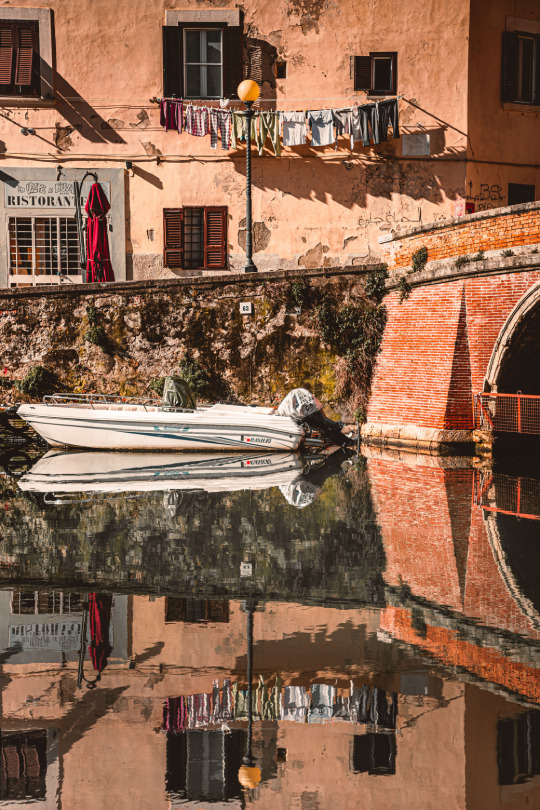
#LongExposure#Photography#CameraSettings#NightPhotography#LightTrails#NightScapes#StarPhotography#Timelapse#MasteringPhotography#ExposureTechniques
0 notes
Photo

Coming up on two years with this lil baddy. Sony FX6. * * #camera #christmas #camerasettings #videograohytips #cameraoperator #cinematography #fx6 #videographytips #sonycine #sonyfans (at Marietta, Georgia) https://www.instagram.com/p/CmeJ-QWrzh_/?igshid=NGJjMDIxMWI=
#camera#christmas#camerasettings#videograohytips#cameraoperator#cinematography#fx6#videographytips#sonycine#sonyfans
1 note
·
View note
Text
The exposure triangle in photography refers to the three fundamental settings that control the exposure of an image: aperture, shutter speed, and ISO. Aperture (measured in f-stops) controls the size of the lens opening, affecting the amount of light entering the camera and the depth of field. Shutter speed determines the length of time the camera's sensor is exposed to light, influencing motion blur and sharpness. ISO measures the sensor's sensitivity to light, with higher values increasing sensitivity but also adding noise. Balancing these three elements is essential to achieving the desired exposure and creative effect in a photograph.
Visit our website: www.ftihedu.com
Enroll Now at FTIH Film School: +918121152777
Photography #ExposureTriangle #Aperture #ShutterSpeed #ISO #PhotographyBasics #CameraSettings #PhotoTips#LearnPhotography #PhotographyTutorial #PhotographySkills #PhotoExposure#CreativePhotography #DepthOfField
MotionBlur #Photography101 #PhotoTechnique #CameraExposure #PhotoEducation
0 notes
Text
Olympia Deluxe Camera Set with Self-Timer 4000 - 35mm
#LittleBitResales #JMikePatt #OlympiaCamera #VintageCamera #35mm #Photography #CameraSet
We proudly offer combined shipping for your convenience, ensuring you save on costs while receiving all your items together.
0 notes
Text
0 notes
Photo

Here you can find some of the best wedding photography suggestions for camera settings that will enable you to capture spectacular visual storytelling and familiarize yourself with your camera’s filter settings. #camerasettingsforweddingphotography #weddingphotographycamerasetting #camerasetting
0 notes
Video
youtube
Pet Photography - Let Your Pet Be A Pet
Today we will show you, explain to you, from our personal experience, on how to photograph pets. We say "Let your pet be a pet", but watch and see for yourselves. Helpful tips on Pet Photography.
#howto #petphotography #petphotographer #photoshoott #photoshoottphotography #letyourpetbeapet #petphotographytips #photographytips #photographing #animalphotography #camerasettings #camerasandequipment #frompersonalexperience
1 note
·
View note
Text
What is ISO in Photography? | A Comprehensive Guide

ISO in photography is a measure of how sensitive your camera is to light. It is one of the three pillars of the exposure triangle, along with aperture and shutter speed.
When you adjust your ISO setting, you are essentially telling your camera how much to amplify the incoming light. A higher ISO setting will make your camera more sensitive to light, allowing you to take photos in darker conditions. However, it will also introduce more noise into your images.
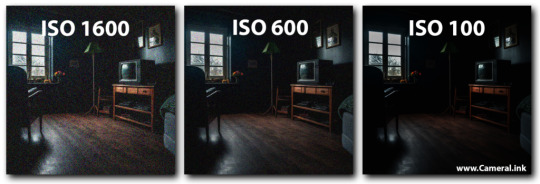
Noise is a grainy or speckled appearance that can occur in photos taken at high ISO settings. It is caused by the amplification of the incoming light signal. The higher the ISO setting, the more noise will be introduced into the image.
When to use a high ISO
A high ISO setting can be useful for taking photos in low-light conditions, such as indoors or at night. It can also be used to freeze motion, as it allows you to use a faster shutter speed.

However, it is important to be aware of the trade-off between ISO and image quality. The higher the ISO setting, the more noise will be introduced into the image. Therefore, it is important to find the lowest ISO setting that you can use for a given situation.
How to minimize noise
There are a few things you can do to minimize noise in your photos:
- Use the lowest ISO setting possible.
- Use a tripod to keep your camera steady.
- Shoot in RAW format so that you can reduce noise in post-processing.
- Use noise reduction software.
Tips for using ISO
Here are a few tips for using ISO in your photography:
- Start with the lowest ISO setting possible and increase it as needed.
- Be aware of the trade-off between ISO and image quality.
- Use a tripod to keep your camera steady when shooting in low-light conditions.
- Shoot in RAW format so that you can reduce noise in post-processing.
- Use noise reduction software to reduce noise in your images.
Examples of ISO in photography
Here are a few examples of how ISO can be used in photography:

- Low ISO: Low ISO settings are typically used for shooting in bright conditions, such as outdoors on a sunny day. This will help to reduce noise in your images.
- Medium ISO: Medium ISO settings are a good all-around option for shooting in a variety of conditions. They can be used for shooting both indoors and outdoors, and they will provide a good balance between image quality and noise reduction.
- High ISO: High ISO settings are typically used for shooting in low-light conditions, such as indoors or at night. They will allow you to take photos in dark conditions, but they will also introduce more noise into your images.
Conclusion
ISO is a powerful tool that can help you to take photos in low light conditions and freeze motion. However, it is important to be aware of the trade-off between ISO and image quality. The higher the ISO setting, the more noise will be introduced into the image. Therefore, it is important to use the lowest ISO setting possible and to minimize noise in post-processing.
Read the full article
#aperture#camerasettings#exposuretriangle#highISO#howtochooseISOsetting#howtouseISO#ISOforbeginners#ISOforeventphotography#ISOforhighspeedphotography#ISOforlandscapephotography#ISOforlowlightphotography#ISOforportraitphotography#ISOforsportsphotography#ISOforstreetphotography#ISOforwildlifephotography#ISOinphotography#ISOsetting#lowISO#lowlight#noise#photographybasics#photographytips#photographytutorial#shutterspeed
0 notes
Link
If you want to know how to perfectly shoot for the high-quality product images, follow these 7 Best camera settings for product photography.
0 notes
Photo

Foreground addict #burjkhalifa #armanihoteldubai #photooftheday #photographer #landscape #landscapephotography #landscapedesign #videography #camera #cameraoperator #camerasetup #camerasettings #dubai #dubailovers #dubaistyle #sky #clouds #car #cars #oldcar #canonr5 #buildings #uae #uaelove (at Burj Khalifa) https://www.instagram.com/p/CQoMfhysO-C/?utm_medium=tumblr
#burjkhalifa#armanihoteldubai#photooftheday#photographer#landscape#landscapephotography#landscapedesign#videography#camera#cameraoperator#camerasetup#camerasettings#dubai#dubailovers#dubaistyle#sky#clouds#car#cars#oldcar#canonr5#buildings#uae#uaelove
5 notes
·
View notes
Text
Searching for Arlo Customer Support

Call Now for instant help at +18333133149 (Toll-Free)
1 note
·
View note
Photo

#LongLiveSleeper @legacyofsleeper I'm doing what I said we would bro. I'm making you proud today bro. I can't wait to announce to the world what we are filming. 🎥 Currently on set 🙏🏾 All because of you. 🖤 #SleepVision #LegacyOfSleeper #Set #SetLife #CameraSet #CameraSpeed #Action #TransformationTuesday #RIP #Tuesday #Documentary (at Hampton, Virginia) https://www.instagram.com/p/CTPRbvIntlO/?utm_medium=tumblr
#longlivesleeper#sleepvision#legacyofsleeper#set#setlife#cameraset#cameraspeed#action#transformationtuesday#rip#tuesday#documentary
0 notes